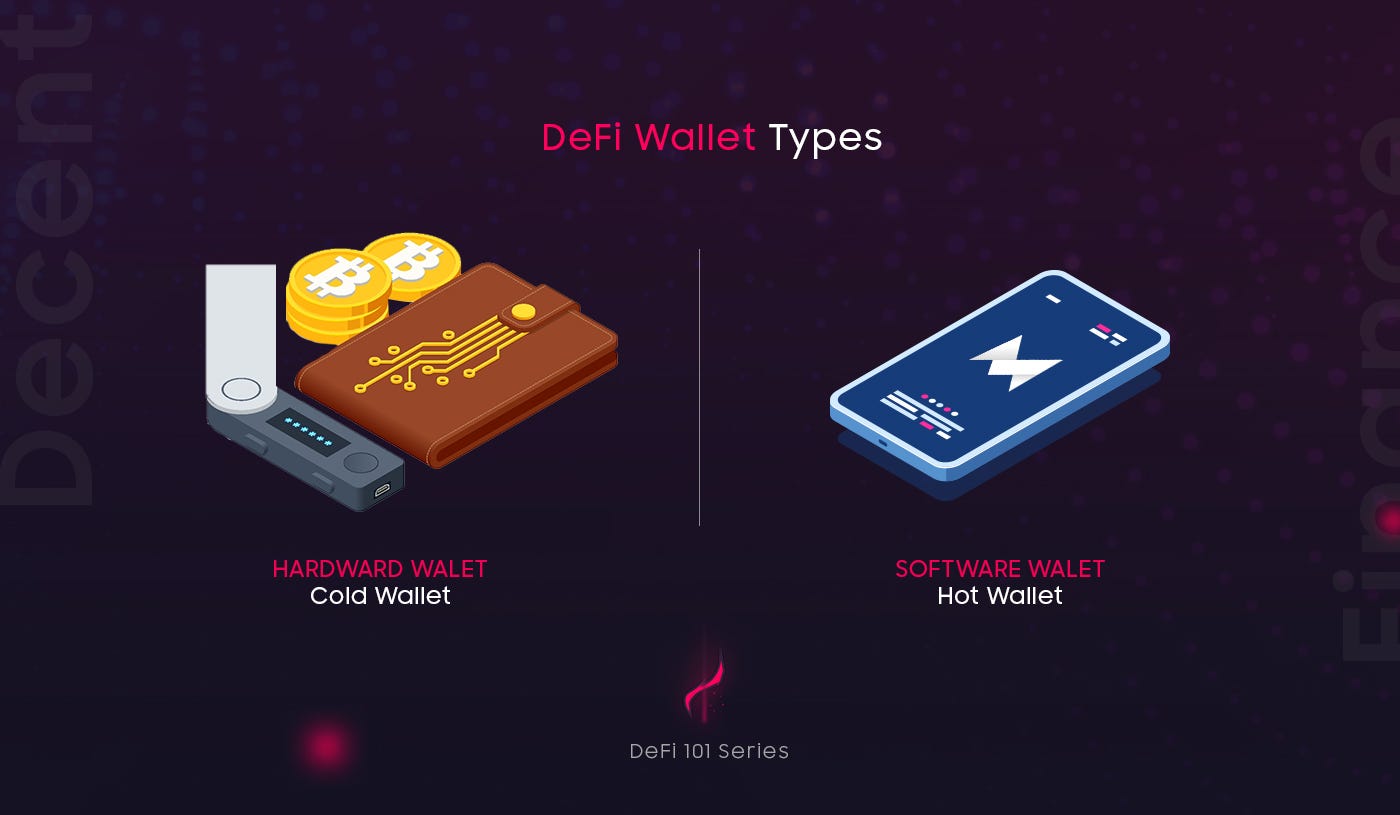As you all knew, on Aug 02, almost 7,000 Solana-based wallets were hacked, resulting in $8 million in funds lost — this is a big event for the blockchain world in particular and the Solana ecosystem in specific. And we need to understand the DeFi wallet well — what it is, how it works, and how to secure your assets.
Let’s go!
What is a DeFi Wallet?
In general, a DeFi wallet is a wallet that stores your cryptocurrency assets.
They are non-custodial, which means you can only access your fund with the seed phrase or private key linked with the wallet. When you own a non-custodial wallet, no one (including the wallet provider) has the right to freeze, access, or trade your assets — except the user himself; it only provides users with an interface to directly interact with assets stored on-chain on the Blockchain.

There are, broadly, two types of non-custodial cryptocurrency wallets: hardware wallets & software wallets:
- Hardware wallets (cold wallets) usually look like USB sticks and you purchase them to hold your assets offline (known as “cold storage”), the most popular companies that provide cold wallets are Ledger and Trezor.
- Software wallets (hot wallets) are online wallets that you access through your web browser or your phone, usually, they are free. Some popular names are:
- MetaMask
- WalletConnect
- Maiar Wallet
How to choose a DeFi wallet?
In the beginning, you need to know which blockchain you plan to use and do they support your DeFi wallet.
For example, MetaMask, one of the most popular wallets, doesn’t natively support the Solana blockchain. You will need another wallet like Phantom, Solflare to interact with Solana decentralized applications (Dapp). Another example is Elrond blockchain; you will need a Maiar Wallet to interact with Dapps there.
Besides that, different wallets come with various features:
- Some wallets are better at supporting certain assets, like visualizing the NFTs you are holding within your account (Rainbow Wallet)
- Some wallets are integrated with DeFi apps, allowing you to interact with DeFi protocols or perform trades without having to leave the wallet (MetaMasks, SolFlare)
- Some wallets support you in buying funds with low fees (Argent, zkSync)
- Some wallets have user-friendly UI (Coinbase Wallet, Maiar Wallet)
- Some wallets prioritize security like Gnosis, Argent…
It depends on your priority to choose a suitable DeFi wallet.
How to use a DeFi wallet?
After choosing a proper DeFi wallet, you will need to:
- Install them on your mobile or web browser
- Create your account with your private key or seed phrases, and find a safe place to secure them
- Fund it with your crypto assets
- And then connect to a DeFi protocol with the “connect wallet” button. You’ll usually find the “connect” button in the top right corner of most DeFi protocol landing pages.
About Maiar Wallet

As you knew, Ashswap is building on the Elrond blockchain, Maiar wallet is the one you need to interact with Dapps there. You can read about their feature at https://maiar.com/.
We just point out some things that you should use Maiar Wallet here:
- You can create a wallet fast and easy
- There is an interesting feature called herotags, which are special usernames powered by the Elrond blockchain through a Distributed Name Service (DNS) deployed on Elrond Network. You can read about how it works here.
- Maiar wallet supports the following crypto assets: eGold (EGLD), Binance Coin (BNB), Ethereum (ETH), Bitcoin (BTC)
Advice for securing your assets with DeFi wallet
The crypto space was a mess when wallets were drained on Solana Blockchain, and people didn’t understand what was wrong; it’s also a reminder that safety wallet practice is a must for crypto users.
We think the number one rule is “Use a hardware wallet” — it can be inconvenient in some cases, but your assets are safe there.

We also found an ideal way to secure your assets, as below:
#1 Cold Wallet
- For long-term crypto stash
- Minimal to zero interactions to dApp
- Must be a hardware wallet
- If you can, use a dedicated hardware wallet separate for everything else
#2 Long-Term DeFi Wallet
- For serious DeFi
- Only trusted dApps
- Routinely revoke permissions
- Must be a hardware wallet
#3 Degen DeFi Wallet
- For high-frequency degen aping here and there
- Change every 6 months or a year (it’s easier to switch wallets than to revoke permissions)
- Must be a hardware wallet
#4 Degen Burner Hot Wallet
- For activities where a hardware wallet is an inconvenience (i.e. snatching a new hot NFT)
- For trying out new dApps
- Only has the fund no more than what’s necessary
- Assets are transferred immediately to the hardware wallet after you’re done
Final Thought
In the end, the most important thing you need to have to secure your assets is: always careful and always have a backup plan.
If you want to know more about the DeFi world, let’s take a look at our DeFi 101 Series.
We hope that our article can help you somehow.

You can check if you are not dealing with a scam
Check now

 @elrondwiki.elrond
@elrondwiki.elrond